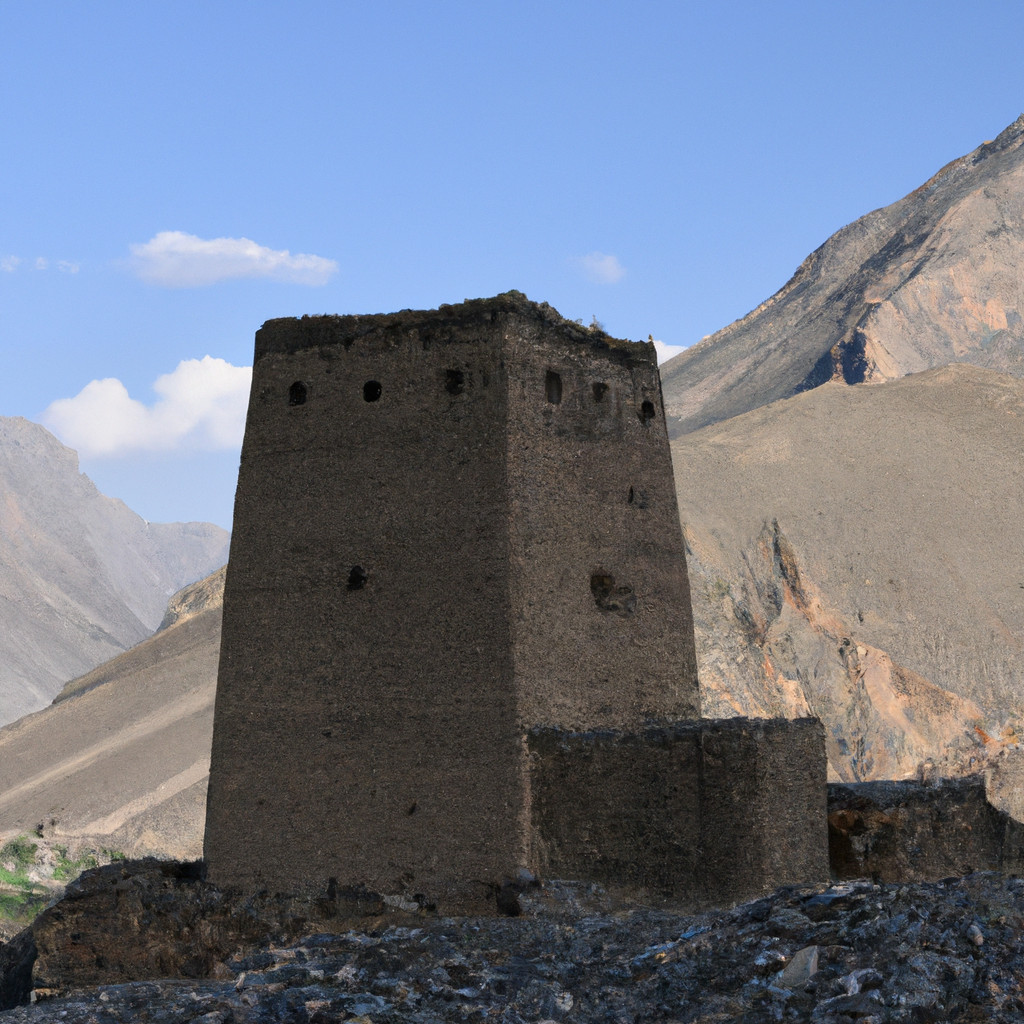Yamchun Fortress in Wakhan, is one of many fascinating sites that both foreign visitors and local tourists can explore while they visit Afghanistan and explore the Badakhshan Province. Perched high on a hillside in the heart of the Wakhan Corridor, Yamchun Fortress paints a picture of a time when the silk route buzzed with travellers. The fortress, possibly dating back to 3rd Century BC, offers a glimpse into the rich history of Afghanistan and the strategic importance this country has held for centuries.
Yamchun Fortress Most Important Events
- The Silk Route Seizure: Yamchun Fortress was a strategic control point for traders and armies on the ancient Silk Route. It witnessed large sieges and was a crucial outpost during this era.
- The Destruction: This iconic fortress fell from grace during various invasions and battles. In particular, the invasion of the Mongols caused severe damage, impacting its architectural beauty and structure.
- The Restoration: In recent years, efforts for its restoration have started breathing new life into this forgotten relic. It’s now recognized as a site of significant historical value.
History of Yamchun Fortress in Wakhan
The fortress was built during the Kushan era, with estimations dating it back to the 3rd Century BC. The structure’s unique layout and design suggest that it was constructed as a military watchtower. It served to secure the borders of then-powerful Kushan Empire.
As it oversaw the Silk Route, Yamchun Fortress played host to a colorful plethora of traders, pilgrims, and warriors. It experienced the rise and fall of many empires and bore the brunt of invasions led by armies trying to dominate the Silk Route.
The most substantial damage was caused by the Mongol invasion in the 13th century, which left the fortress in ruins. Over time, the fortress was forgotten until recent efforts brought it back into focus, fueling restoration and study.
Why It’s Important to Afghan History
Yamchun Fortress stands as a testament to Afghan history’s resilience and diversity. The Silk Route’s control meant political and economic power, and hence, the fortress represents Afghanistan’s long-standing strategic relevance.
More than just a military structure, it showcases architectural wonders of the time, reflecting cultural exchanges that occurred because of the Silk Route linkage. This exchange of ideas and traditions makes the Yamchun Fortress a cornerstone of Afghan’s rich cultural heritage.
Why to Visit Yamchun Fortress
Yamchun Fortress is a dream come true for history buffs and nature lovers alike. Its towering walls offer magical views of surrounding valleys and the Panj River.
Besides the amazing view, you get to step back into time, walking through ruins that resonate with whispers of a bygone era. From marvelling at the architectural ingenuity to picturing a bustling Silk Route, the fortress is a journey into the past.
- The sweeping views of Wakhan Valley.
- The architectural brilliance of the fortress.
- The remnants of Zoroastrian fire temple inside the fortress.
- The fascinating tales of the silk road.
- The enchanting hike from the village of Vrang.
Located around 210 kms from the city of Khorog, the fortress is best visited from May to October when the weather is pleasant.
Cultural & Tourist Significance
The fortress is a cultural treasure. It houses an ancient Zoroastrian fire temple, sacred to one of the world’s oldest religions. Such a cultural convergence makes the fortress a melting pot of various traditions.
It’s a loved destination among trekkers across the world due to the challenging terrain. People are intrigued by the historical relevance as well as the picturesque route which starts from the village of Vrang.
Moreover, as the fortress is a part of the Silk Route, its popularity amongst tourists is on an upswing. The fortress’ journey and historical imprint are remarkable and have increased its significance on the tourism map of Afghanistan.
Interesting Facts
Despite its isolated location, Yamchun Fortress has been a vibrant cultural hub. Its Zoroastrian temple indicates that there was an active community that worshipped there.
There’s also a legend that the fortress housed a great library, much like the famous Library of Alexandria. Though no concrete evidence has been found, many believe that it might be buried somewhere in the ruins.
Furthermore, the fortress construction technique, which utilized renewable local materials, is a testament to the early architectural wisdom that was sustainable and eco-friendly.
In conclusion, Yamchun Fortress, with its strategic significance, architectural beauty, and historical relevance, is an unmissable part of any Afghan exploration. Whether you’re intrigued by its past or enchanted by its stunning views, it’s a place that deserves recognition and respect. As the restoration work continues, there’s hope that more of its tales will be uncovered, ensuring that Yamchun Fortress continues to fascinate and inform generations to come.


